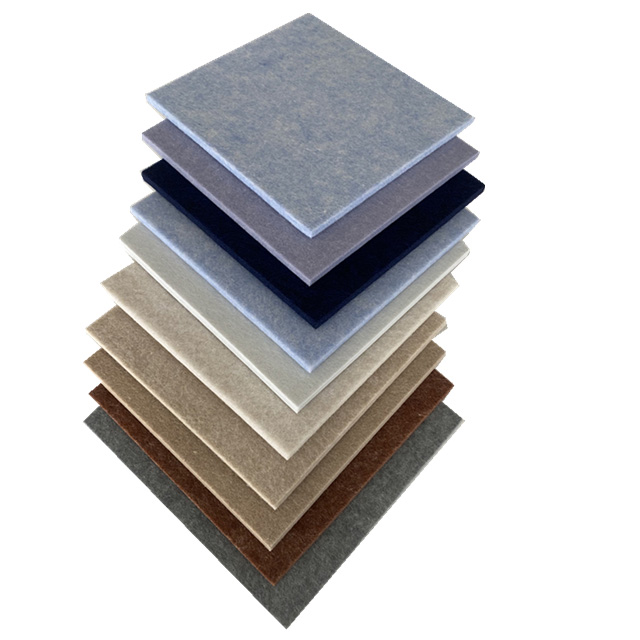Features and considerations for acoustic wall tiles
2024-04-15
Acoustic wall tiles are specialized wall coverings designed to improve the sound quality and acoustics of a room by absorbing sound waves and reducing reverberation. These tiles are commonly used in environments where speech intelligibility, noise reduction, and overall comfort are important, such as offices, conference rooms, classrooms, recording studios, and home theaters. Here are some key features and considerations for acoustic wall tiles:
1. Material: Acoustic wall tiles are typically made from sound-absorbing materials such as foam, fabric-wrapped panels, fiberglass, polyester fiber, or composite materials. These materials are chosen for their ability to absorb sound waves and reduce reflections, improving the overall acoustics of a room.
2. Sound Absorption: Acoustic wall tiles are designed to absorb sound energy that strikes their surface, rather than reflecting it back into the room. This helps to reduce reverberation and echo, improve speech clarity, and create a more comfortable and pleasant acoustic environment.
3. Design and Appearance: Acoustic wall tiles come in a variety of shapes, sizes, colors, and finishes to suit different aesthetic preferences and architectural styles. They can be installed in various patterns or configurations to create visually appealing designs and enhance the decor of a room.
4. Installation: Acoustic wall tiles are typically installed on walls using adhesive mounts, clips, or suspension systems. They can be easily installed by a professional installer or DIY enthusiast and require minimal maintenance once in place.
5. Thickness and Density: The thickness and density of acoustic wall tiles play a crucial role in their sound-absorbing properties. Thicker and denser tiles generally provide better absorption of low-frequency sounds, while thinner tiles may be sufficient for higher frequencies. It's essential to choose tiles with the appropriate thickness and density for the specific acoustic requirements of the room.
6. Fire Resistance: Acoustic wall tiles are often treated with fire-retardant chemicals to improve their fire resistance and safety. It's essential to check the fire rating and certification of the tiles to ensure compliance with building codes and safety regulations.
7. Environmental Considerations: Some acoustic wall tiles are made from environmentally friendly materials, such as recycled fibers or low-VOC (volatile organic compound) emissions. These eco-friendly options are a sustainable choice for environmentally conscious projects and contribute to better indoor air quality.
8. Customization Options: Many manufacturers offer custom acoustic wall tiles that can be tailored to meet specific design requirements, including size, shape, color, and finish. Customization options allow for greater flexibility in creating unique and personalized acoustic treatments for different spaces.
By considering these features and factors, you can select the right acoustic wall tiles to meet the acoustic and aesthetic requirements of your space while improving sound quality and comfort for occupants.



